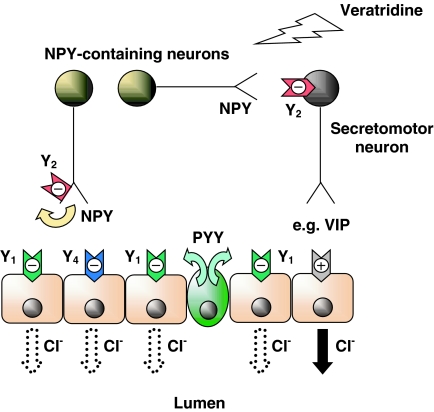Figure 4.
Schematic diagram depicting the sites of action of NPY from enteric neurons and endocrine PYY upon different targets in normal mouse colon mucosa. Direct activation of epithelial Y1 receptors by NPY and PYY will inhibit epithelial anion (Cl−) secretion. Veratridine nonselectively stimulates all intrinsic submucosal neurons. NPY released from submucosal secretomotor neurons can autoinhibit NPY release (a Y2 receptor-mediated effect) and also, when released from interneurons can inhibit (again via Y2 receptors) other NANC secretomotor (e.g. VIP-ergic) neurons. Endocrine PYY may coactivate neuronal Y2 receptors as well as the epithelial Y1 receptors (predominant in mouse and human colon). Both mechanisms result in a sustained inhibition of epithelial Cl− secretion. The NANC neurotransmitter in the final secretomotor neuron has not yet been positively identified, but it is most likely to be VIP that causes the cAMP-dependent epithelial Cl− secretion.

